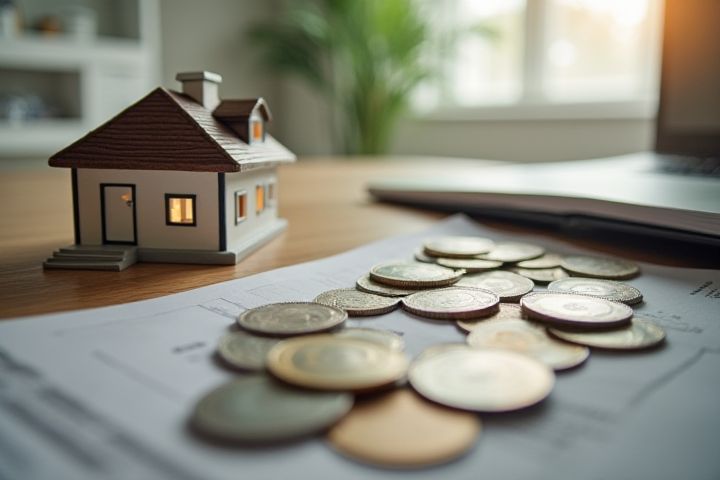
Yes, refinancing a house after buying is a common practice among homeowners seeking better mortgage terms. You can typically refinance your home within a few months of purchase, although specific timing may depend on your lender's policies and your financial situation. A key reason to refinance is to secure a lower interest rate, which can reduce monthly payments and overall loan costs. Additionally, refinancing can allow you to switch from an adjustable-rate mortgage to a fixed-rate mortgage for more financial stability. It's important to consider closing costs and local market conditions before proceeding with a refinance to ensure it aligns with your long-term goals.
Can You Refinance A House After Buying
Loan-to-Value Ratio
Refinancing your house after purchase is influenced significantly by the Loan-to-Value (LTV) ratio, which is a crucial metric used by lenders. This ratio compares the amount of the loan to the appraised value of your property, with a desirable LTV often being 80% or lower to avoid private mortgage insurance (PMI). For example, if your home is valued at $300,000 and you owe $240,000, your LTV would be 80%. Generally, a lower LTV can lead to better refinancing rates and terms, making it essential to understand and manage this ratio when considering refinancing options.
Credit Score Requirements
Refinancing a house typically requires a credit score of at least 620, although various lenders might have different thresholds. A higher credit score, often 740 or above, can significantly improve your chances of securing a favorable interest rate and loan terms. You should regularly check your credit report for any discrepancies, as even minor errors can impact your score. Maintaining a low debt-to-income ratio and timely payments can further enhance your creditworthiness, making refinancing more accessible after purchase.
Home Equity
Refinancing your home can be particularly advantageous if you've built substantial home equity, typically defined as the difference between your home's current market value and the outstanding mortgage balance. For instance, if your home is valued at $300,000 and you owe $200,000, you have $100,000 in home equity. Many lenders allow refinancing once you reach at least 20% equity, enabling access to better interest rates or cash-out options for renovations or debt consolidation. Make sure to evaluate current interest rates, as even a 1% decrease can significantly reduce your monthly payments and overall loan cost.
Interest Rates
Refinancing your house can be a strategic financial move, especially when interest rates drop. Current average mortgage interest rates fluctuate around 3.5% to 5.0%, and securing a lower rate can significantly reduce your monthly payments and overall interest costs. Typically, homeowners can refinance as soon as six months after buying, provided they meet lender requirements and have built sufficient equity. You can save thousands over the life of your loan if you act when rates are favorable.
Loan Term Options
Refinancing your house shortly after purchase can significantly alter your loan term options, allowing you to switch to a shorter or longer duration based on your current financial goals. A common option is a 15-year fixed mortgage, which offers lower interest rates and builds equity faster but requires higher monthly payments. Alternatively, a 30-year fixed mortgage provides lower monthly payments, which may enhance your cash flow, though you'll pay more interest over the life of the loan. Understanding your options for refinancing can empower you to make informed decisions that align with your long-term financial plans.
Fees and Closing Costs
Refinancing a house after purchase often incurs various fees and closing costs that can significantly impact your decision. Typical fees include origination fees, appraisal costs, title insurance, and credit report fees. You might also encounter closing costs that can range from 2% to 5% of the loan amount, affecting your overall financial strategy. Understanding these expenses can help you evaluate whether refinancing aligns with your long-term financial goals.
Employment and Income Verification
Refinancing a house typically requires thorough Employment and Income Verification to ensure that you can manage the new loan amount. Lenders will often request your most recent pay stubs, W-2 forms, and tax returns to assess your financial stability. If you've been in your job for at least two years, this can strengthen your application, as it demonstrates consistent employment. Ensuring your debt-to-income ratio is below 43% will also enhance your chances of approval, making your refinancing process smoother.
Waiting Periods
Refinancing a house shortly after purchase typically involves specific waiting periods that vary by loan type. For conventional loans, you may need to wait at least six months before refinancing. FHA loans often require a minimum waiting period of 210 days, while VA loans allow a refinance as early as seven months after the original loan closing. Understanding these timelines is crucial for your financial planning, ensuring you can capitalize on potentially better interest rates or loan terms.
Impact on Monthly Payments
Refinancing a house after purchasing can significantly impact your monthly payments. Homeowners often seek to refinance within 1-3 years of buying, aiming for lower interest rates or improved loan terms, which can result in savings of hundreds of dollars per month. For example, by reducing your interest rate from 4% to 3%, a $300,000 mortgage may decrease your payment from approximately $1,432 to around $1,264, saving over $168 each month. Understanding these potential reductions can help you make informed decisions about your mortgage strategy and overall financial health.
Types of Refinance: Rate-and-Term vs. Cash-Out
After purchasing a home, you can refinance it using two primary types: Rate-and-Term refinance and Cash-Out refinance. A Rate-and-Term refinance typically adjusts your mortgage interest rate and/or the loan term without changing the amount borrowed, potentially lowering your monthly payment. Conversely, a Cash-Out refinance allows you to borrow against the equity in your home, providing you with cash for expenses such as home improvements or debt consolidation, while increasing your mortgage balance. Knowing the differences can help you choose the best option based on your financial goals and current market conditions.
